The Evangelical Lutheran Church of France
In 1808, quite a large Lutheran community in Paris consisting of foreigners became a Church which was connected to Strasbourg. The Evangelical Lutheran Church of France was established in France in 1872 after the Franco-German war of 1870. Today there are about fifty parishes and talks are under way to bring this Church closer to the “Eglise réformée de France”. The two Churches hope to unite, thus forming one Church.
The origins of the Lutherans in France
The ideas of Luther (1483-1546), which became known from 1516-17, spread to France as soon as 1521 (the Meaux circle) ; the first Protestants were called lutherans. Luther’s ideas often started in humanist circles and caught on rapidly because of reformers such as Guillaume Farel. The reformed Churches in France were established mainly by Jean Calvin, who had lived in Strasbourg before moving on to Geneva.
However, from the beginning of the Reformation movement onwards, the Lutheran Churches were set up on a permanent basis in two regions belonging to the German empire which are now part of France : Alsace and the county of Montbéliard, which belonged to the duke of Wurtemberg and where French is spoken. Even at the revocation of the Edict of Nantes in 1685 the protestant service continued to be held there.
In Paris, for over two centuries, the only protestant service to be allowed was Lutheran because it was attended by foreigners passing through the city and by immigrants. There were two waves of immigrants who gradually made up the Lutheran community : the first was from the XVIIth century onwards and especially in the XVIIIth century, when skilled craftsmen came from Germany (some of whom were excellent cabinet makers) ; the second was in the XIXth century when workmen came because they had been attracted to the rapidly developing capital ; later people from Alsace arrived who had been forced to leave their province because it had been annexed by Germany after the Franco-German war in 1870-1871.
The Church of the Augsburg Confession
From 1802 onwards, in the “organic Articles” Napoleon Bonaparte, the First Consul, authorized the celebration of protestant reformed and Lutheran services. Alsace and the region of Montbéliard were able to keep the statute which applied particularly to their Church : local consistories, which were gathered together into inspections, organized by pastors who were ecclesiastical inspectors with the assistance of laymen, supervised by a higher consistory established in Strasbourg, whose president was appointed by the State. So, unlike the reformed Church, the Lutherans were in the enviable position of having the united Church of the Augsburg Confession (Eglise de la Confession d’Augsbourg).
In Paris there had been no Lutheran service since 1806 when Napoleon shut down the chapel in the Swedish embassy where protestant services had been held since 1626. However the Lutherans insisted that they had about 10,000 members in Paris and with the support of general Rapp, a petition was made to the emperor for a place of worship. In 1808, he established the consistorial Church of Paris, which was connected with the Temple-Neuf in Strasbourg and they were given the Church of the “Billettes”. In 1853 the Church of Paris became an Inspection.
The 1870 war
In 1871, Alsace and the Moselle became German territories ; the Inspection of Paris and Montbéliard were cut off from Strasbourg, their main Church and their university of theology. At a synod, held in Paris in July 1872, the Evangelical Lutheran Church of France was established, which consisted of two ecclesiastical inspections :
- In Montbéliard, where after a while it was no longer a majority Church;
- In Paris, where there were Lutherans of German origin, church members from Alsace who wanted to remain French and also Church members from Montbéliard.
The synod voted a Constitutionaccording to the synodal structure, with parish councils set up in 1852 ; it was officially recognized by law on 1st of August 1879.
Immediately the Church asked for a theology university to be set up in Paris which would be both reformed and lutheran. A decree in March 1877 set up the faculty which was built in Boulevard Arago on a plot of land belonging to the Town of Paris – it opened its doors in 1879.
Lutheran theology
The four pillars of Lutheran faith are :
- Solus Christus, Christ is the only Saviour,
- Sola gratia, he has saved us entirely through grace,
- Sola fide, faith is all we need to receive this grace,
- Sola scriptura, the Bible is our only guide towards faith.
The Apostles Creed is the basis of the Confession of faith. The key Lutheran texts are the Confession d’Augsburg written in 1530 and The Small Catechism by Luther.
Like other protestant Churches, the Lutheran Churches have two sacraments :
- Baptism, an act of faith and a sign of the love of Christ ; it denotes the entry of a believer into the Church. Small children, adolescents and adults can all be baptized ;
- the Last Supper takes place during the act of worship and is presided over by an ordained priest. The consecrated bread and wine enable us to draw near to the body and blood of Christ, the living Word, which is essential for our whole being. All baptized Church members who hold Jesus Christ to be their saviour are allowed to participate. This act of faith brings us into an intimate relationship with Christ and it is a way of also sharing our faith with our neighbour.
The Lutheran Church attaches great importance to the building up of unity amongst Christians in the world. They have kept to a liturgy which comes partly from the rites of the Catholic Church and they have themselves added chants and gestures which are in harmony with Catholicism. For example the body of Christ remains on the Cross above the altar and some pastors do the sign of the cross when they face the congregation.
The EELF in 2012
In 1906, due to the 1905 law separating the Church from the State, the EELF already took on its present form, as an official religious association, whereas the diaconal associations were set up according to the law of 1901.
In the same way as when it was first established, the EELF today consists of two regional ecclesiastical inspections :
- The inspection of Montbéliard : there are three counties (or “departments”) the north of the Doubs, the Belfort region and the north of the Haute-Saône. There are 35,000 members in 31 parishes,
- The inspection of Paris covers the rest of France, not counting Alsace and the Moselle which have remained under the concordatory system. Its parishes are in Paris (about ten of them), also around Paris (another ten), Lyon and Nice. There are about 6,000 members.
The EELF has always been a very outward-looking Church ; in the Paris parishes there are many foreigners who are either passing through or permanent residents. They are deeply involved in missionary work and in the ecumenical movement. Women pastors have been admitted since 1974.
In 1972, the CPLR, the Protestant Lutheran-Reformed Council (Conseil protestant luthéro-réformé) was set up ; it is comprised of the French Reformed Church (Eglise Réformée de France) and the Lutheran and reformed Churches of Alsace and the Moselle. It is now called a Communion, which is the French counterpart of the European agreement of the recognition of the pastoral ministry and the training of pastors.
The EELF is a member of the French Protestant Federation (Fédération Protestante de France), in fact it participated in its foundation in 1905, also of the International Lutheran Federation, the Conference of European Churches and the Ecumenical Church Council.
L’Église protestante unie de France
The general synod of the EELF which was held in Sochaux in May 2007 and the national synod of the French Reformed Church(Eglise reformée de France) together decided on a project leading to the institutional union of their two Churches, which would become a united protestant Church. This would be organized into different denominational areas, some being Lutheran and others reformed ; there would be a unique national structures (for example, a national or general synod, a central committee, a ministerial commission) in all these structures, both denominations would be respected. The synods have asked for this to come about as soon as possible and in 2013 at the latest. The joint synod held in Bourg-la-Reine in 2009 worked on this project and reacted favourably to suggestions which had been put forward.
Luther's rose
The reformer had invented a seal in the form of a rose for his books which included his own initials. This rose, in different forms, sometimes stylized and sometimes identical to the original, became the symbol of the Lutheran Churches in the XIXth century. It reflects Luther’s theology : the black cross symbolizes the suffering necessary in every Christian life ; a heart is placed at the centre of the white rose which symbolizes spiritual joy ; the blue background shows that this joy is truly heavenly and the golden circle is a sign that such happiness will last eternally.
Bibliography
- Sites
- Site de l’Église protestante unie de France | Link
Associated tours
-
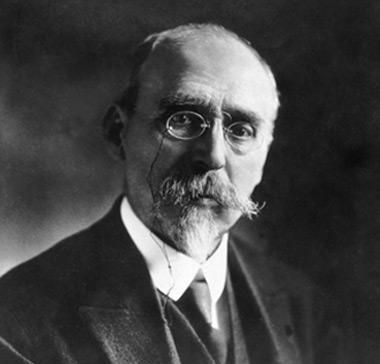
Protestantism in the XXth century
The law of 9th December 1905 separating the Churches from the State guaranteed the freedom of public worship for the Reformed Church and a legal framework. Hardly surprisingly, most Protestants...
Associated notes
-

The Protestant Churches of Alsace and Lorraine (UEPAL, EPCAAL and EPRAL)
The Lutheran and Reformed Churches of Alsace and Moselle have been working towards unity for a long time. These efforts finally met with success when the Union des Eglises Protestantes... -
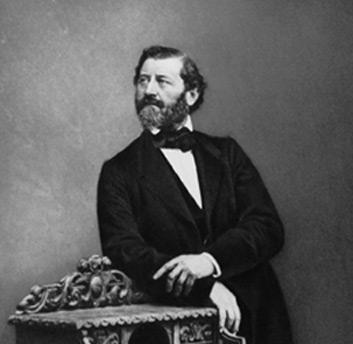
Union of Evangelical Free Churches
The Union des Eglises Evangéliques Libres (UEEL) (Union of Evangelical Free Churches) was set up in 1849, because its members wanted to openly strengthen their links with the Reform movement... -
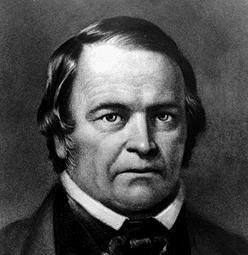
The Seventh Day Adventist Church
The Seventh day adventist Church has its roots in the Reformation movement of the XVIth century and the Revival movement of the XIXth century ; the latter being the stronger influence.... -

The Mennonite Churches
The Mennonite Churches go back to the radical Reform movement of the XVIth century ; they were persecuted in Switzerland, then settled along the Rhine valley. In the XVIIth century there was a... -
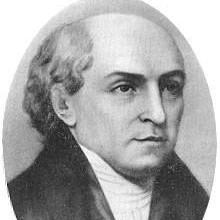
The Baptist Churches
The Baptist Churches have been established in France since the beginning of the XXth century in certain regions (mainly in the North), but with the help of the English and... -
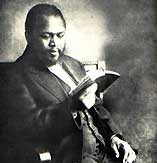
The Pentecostal Churches
The Pentecostal movement is the most successful Protestant denomination in the world today, with about 150 million members. Its presence in France goes back to the 1930s and its main... -
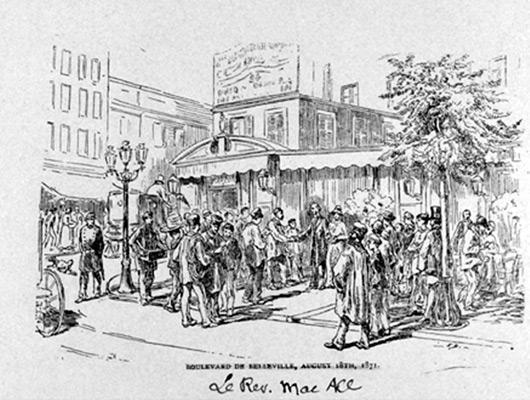
The Evangelical Churches
The existence of Evangelical Churches in France goes back to the beginning of the XIXth century. There are at present 1850 Churches with 350.000 members and there are about 200... -
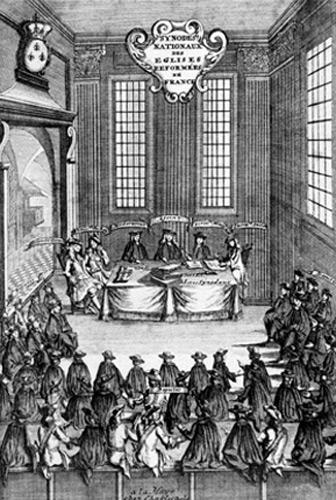
French Reformed Church
The French Reformed Church (Eglise Réformée de France) was founded in 1938 ; its origins go back to the XVIth century to the reformed Churches which were set up by Jean...
